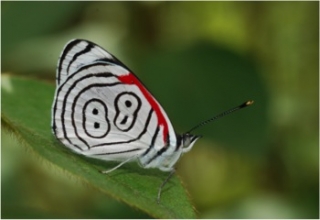
This beautiful place was recognized by the United Nations as a World Heritage Site in 2017. 1987 and is part of the Sierra Madre Oriental. Its territory is connected by federal highway 85 and the state highway of Gómez Farías, the ejido of Altas Cimas, the town of San José, ejido La Gloria and Joyas de Manantiales.

Varied ecosystems
Its natural attractions are distributed between valleys and mountains, rivers, waterfalls and springs, but its particularity is due to the coexistence of the following ecosystems:
- Mesophilous mountain forest, which is also known as cloud forest,
- Temperate pine-oak forest, located in the heights,
- Arid plain of xerophilous scrubland,
- Aquatic vegetation.

There are 4 different routes to get there, but it is not possible to access it completely by car. To Cimas Altas there is a narrow dirt road with some difficulty that requires four-wheel drive.
Its natural attractions
Due to its great natural attraction, this wonderful place invites you to take splendid trails on walk walks. The farmers and inhabitants of this town have made an effort to create excellent trails that represent the natural diversity of the different areas such as:
- Cerro de la Cruz in the Alta Cima,
- El Mirador in the Alta Cima as well,
- El Valle del Mante and Xicoténcatl also called Cerro de las Chachalacas (Alta Cima),
- La Huella del Jaguar in la Gloria.

Among the most frequented destinations in the El Cielo Biosphere is San José, which is famous for its troglobia fauna. These are a type of invertebrates that in their evolutionary chain have adapted to life in caves with few nutritional contributions and that generally lack eyes and are characterized by their poor pigmentation. It is in La Cueva del Agua, a 20 km walk from San José, that you will enjoy seeing this type of animal.

You will be able to enjoy a completely different landscape from one point to another with the freedom to do very varied sports activities. It is a destination worth visiting on your next trip to Tamaulipas.












